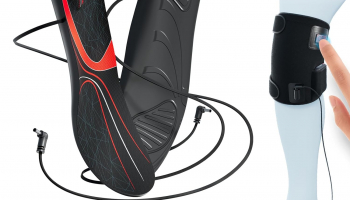The External Combustion Kraftwagen
Made in Germany from machine-tooled solid brass, stainless steel, and aluminum, it uses the thermodynamic principle of a regenerative heat engine–put to its first practical use in 1818 by Robert Stirling–powered by the expansion and compression of air.
An alcohol burner in the rear heats a cylinder; a quick twist of its brass flywheel sets the engine’s displacement and working pistons into motion up to 2,000 rpm. The resulting expansion and contraction of heated and cooled air inside the engine operates a rocker arm, connecting rod, cam, and crankshaft, which spin four flywheels to drive its two 3 1/2″ diameter rubber-bound wheels. A third wheel in front can be manually turned 360º, allowing the car to perform autonomous circles while it putters efficiently.






